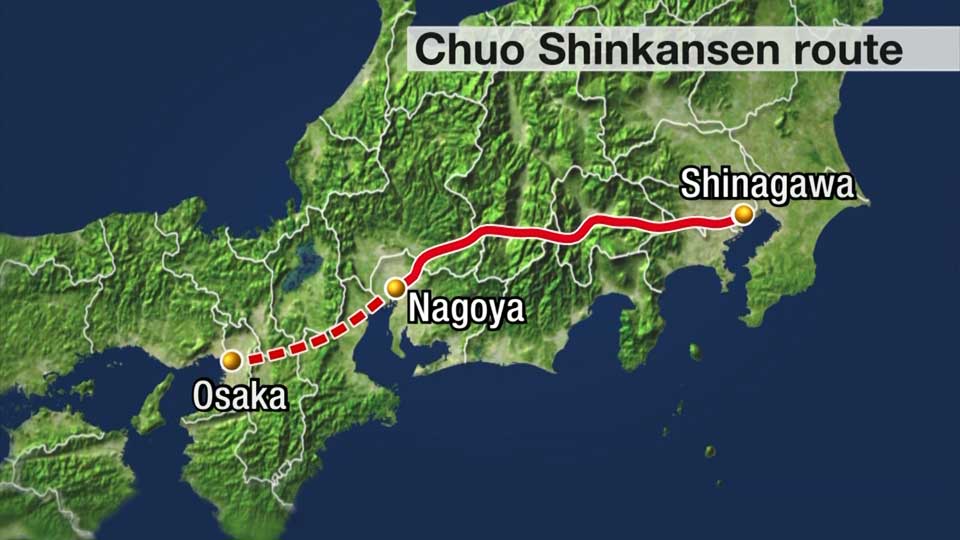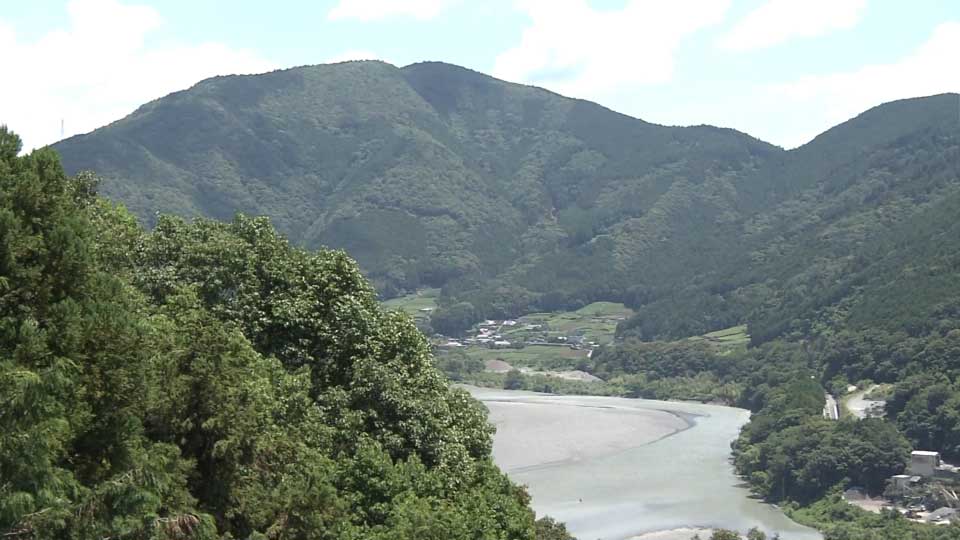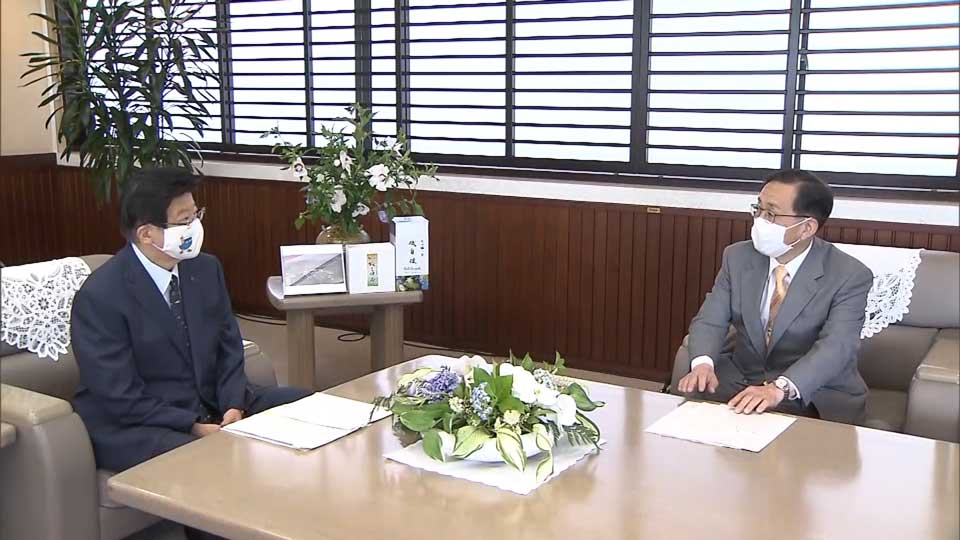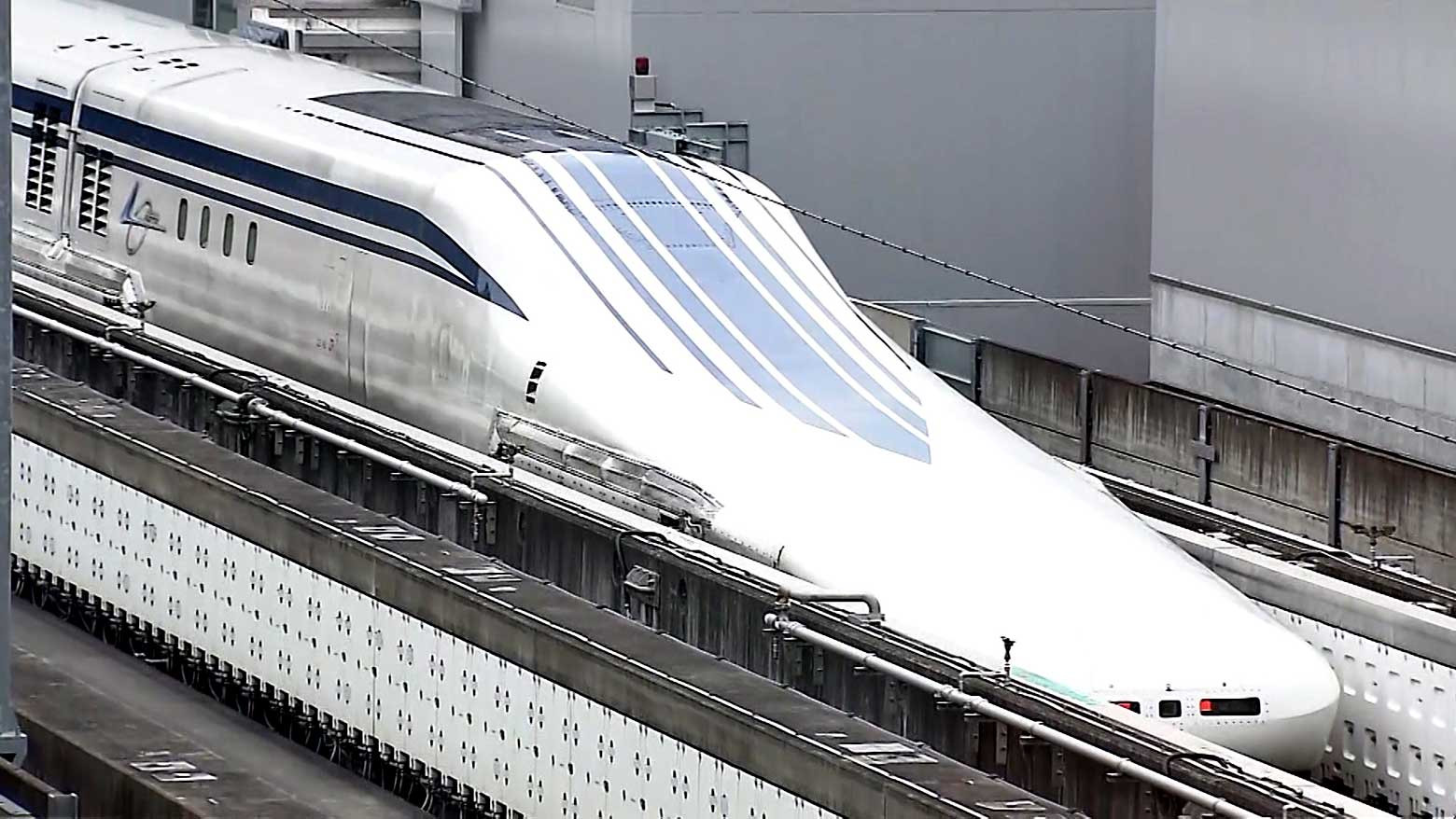Maglev technology enables such high speeds using superconducting magnets that levitate the train about 10 centimeters above the tracks and push it forward. The new bullet train will travel from Shinagawa Station in Tokyo to Nagoya Station in Aichi Prefecture in just 40 minutes, slashing 50 minutes from the current journey time.
Straight line
The route between Shinagawa and Nagoya was drawn in a practically straight line, free of curves as far as possible. The line will pass through seven prefectures -- Tokyo, Kanagawa, Yamanashi, Shizuoka, Nagano, Gifu and Aichi.
The budget for the entire project is about $85 billion. About one-third of that sum was funded by the government through a low-interest loan as it's considered a "national project."

The start of services on the whole route from Shinagawa to Osaka is slated for 2037. But Central Japan Railway had aimed to open the line between Shinagawa and Nagoya 10 years earlier, in 2027. The company also sees the line as an alternative transportation link if a natural disaster damages the Tokaido Shinkansen, Japan's main rail artery.
Uchida Toshihiro, an economist who's an expert on Japan's Tokai central region, outlined the new Maglev Shinkansen's economic benefits.
"A private think tank estimates the economic effects will be worth 105 billion dollars nationwide over the first 50 years, on the premise that operations get underway in 2027," he says. "In the Tokai region alone, about 19 billion dollars' worth of business would be generated."
But there's an obstacle. Shizuoka Prefecture hasn't given permission for a nine-kilometer section of tunnel to be built there.
Natural impact
The Oigawa River running through the prefecture has its source in the Southern Alps. A study found that building the tunnel will cause groundwater flowing into the river to leak into the tunnel, reducing the size of the stream. That worries municipalities in Shizuoka.
The Governor of Shizuoka Prefecture, Kawakatsu Heita, said he was concerned about the environmental impact of the project, saying it will affect the livelihoods of his constituents.
"It is totally because of the water issues," he says. "Water is of the utmost importance to us and if they construct a train tunnel through the Southern Alps, they say two tons per second will be lost. More than 600,000 people depend on this water. It is the lifeblood of the prefecture."

Central Japan Railway disagrees. The company has told the prefecture it will use waterways and pumps in the tunnel to redirect groundwater, so the river won't be affected.
But Kawakatsu is unconvinced, insisting that the company hasn't provided clear scientific evidence.
"We can't accept this," he says. "Why did they choose this route when there were so many proposed? This shortest option is only for speed. They should change the route because going five minutes around wouldn't matter much."
Butting heads
An expert panel set up by the transport ministry is discussing ways to reduce the project's impact on water resources.
At the panel's first meeting in April, Central Japan Railway President Kaneko Shin slammed Shizuoka. He said it's wrong for the prefecture to hold the construction plans hostage to such high demands.
Shizuoka lodged a strong protest in response, saying Kaneko's remarks run roughshod over residents' feelings and push aside global moves to protect the environment.
The company says it will be difficult to open the line in 2027 if the current impasse cannot be broken.

Economic repercussions
Because of the sheer scale of the project, the uncertainty is casting a shadow over a wide range of business interests.
Professor Uchida says: "If construction work is delayed due to the difficulty of opening the line in 2027, construction costs are likely to increase. It could also affect the redevelopment of areas along the line, including intermediate stations. For example, redevelopment projects planned for around Shinagawa and Nagoya stations may also be delayed."
The Japanese government and business leaders had high hopes for the scheme as a major project after the Olympic Games. But, the spread of the new coronavirus is now making it unclear whether Tokyo will host the Olympic and Paralympic Games at all. In addition, the delay in the opening of the Maglev train project has contributed to a fairly sluggish mood in the business community.
On top of that, tourists from abroad have disappeared, and business trips have plunged because more and more conferences and meetings are being held online. The visitors will come back, but business trips may decrease if teleworking takes root.
Long-term mega projects always come with risks, especially as social situations can change significantly over a long period of time. But in the end, as so often, it's the taxpayers who will have to foot the bill.

